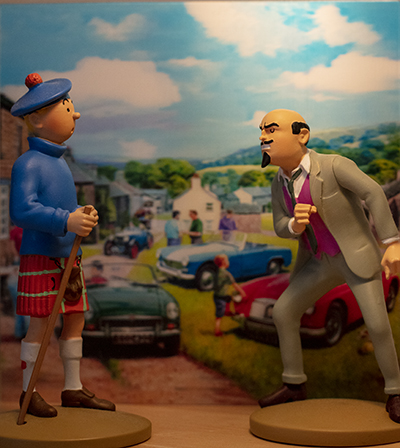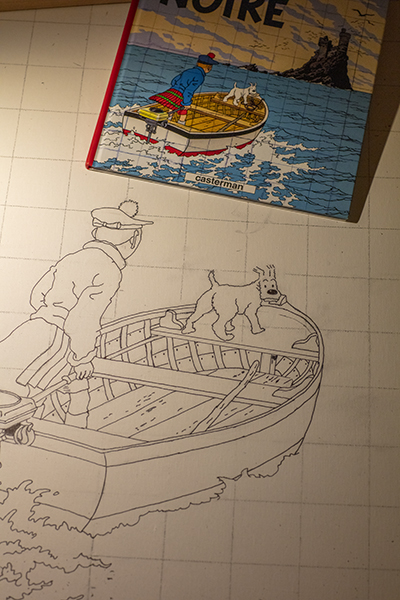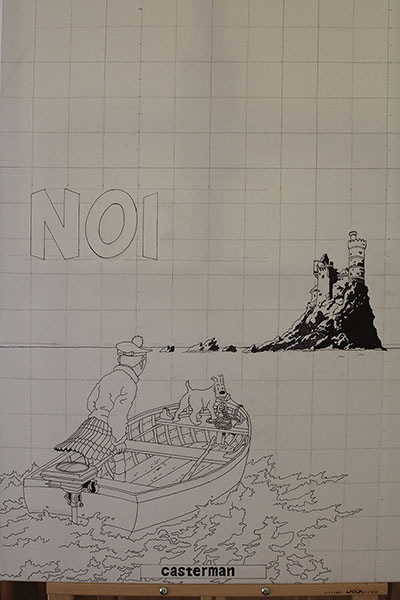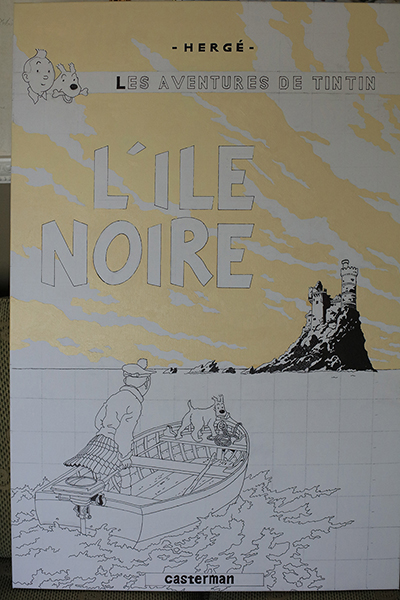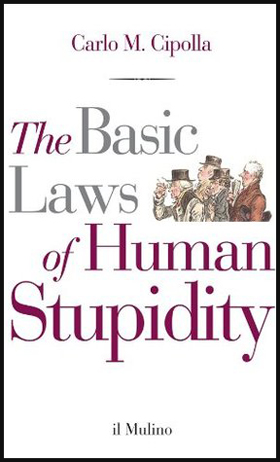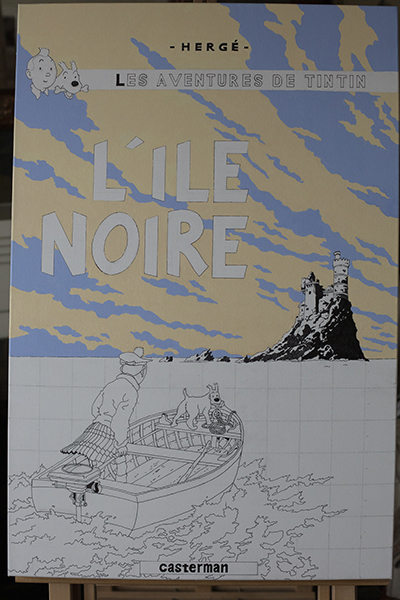
Welcome to the second and last part of Tintin and the Black Island. The photo above shows the clouds almost completed. The yellow sky was a problem, because once on the canvas, the color became too dark as it dried. I had to find a recipe for a lighter yellow than the one on the original cover so that as it dried the color would get darker and match the color of the album.
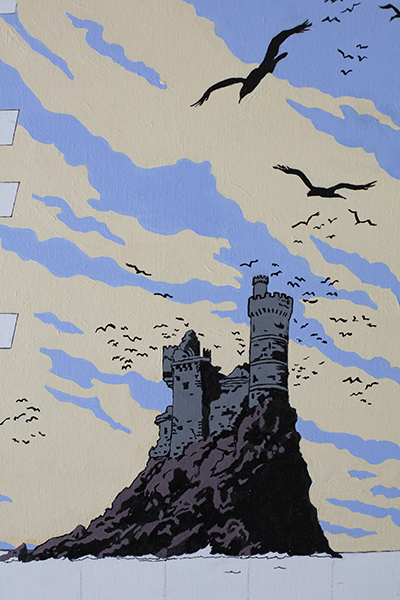
The photo above shows the progression of the castle and the island, but this time with the birds as a bonus. Hergé drew a lot of black birds around the castle, which adds to the sinister look of the place. But he also thought of drawing two larger birds in the foreground, of which one seems to be heading towards Tintin.
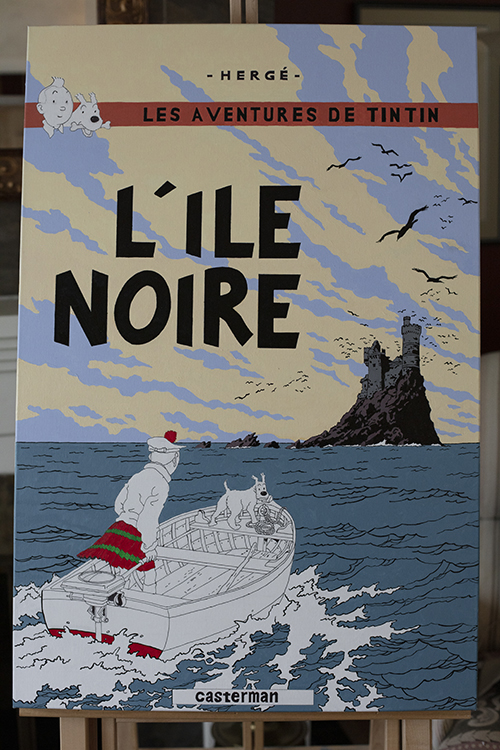
The painting is progressing rapidly. I have already worked on it for about a hundred hours to get to this point. The sea has received all its touches of black paint to form the appearance of waves.
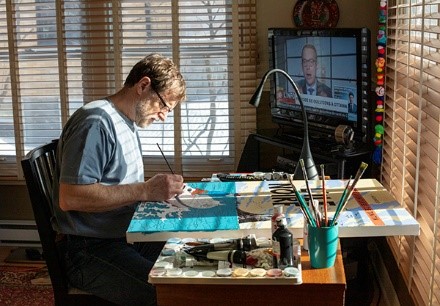
The picture above gives an idea of the size of the painting. The painting must often be placed on a table to paint the elements that require great precision.
In the background of the photo, a journalist from the Canadian news channel RDI is seen on television. He is commenting on the street blockage situation in Ottawa by truckers during the Covid-19 pandemic. The protesters fight for their rights, but do not respect the rights of the citizens of Ottawa who, for weeks, are trapped in their neighborhoods. The Canadian government finally put an end to the situation by invoking the Emergency Measures Act with the added bonus of a $306 million lawsuit brought by residents against the protesters.
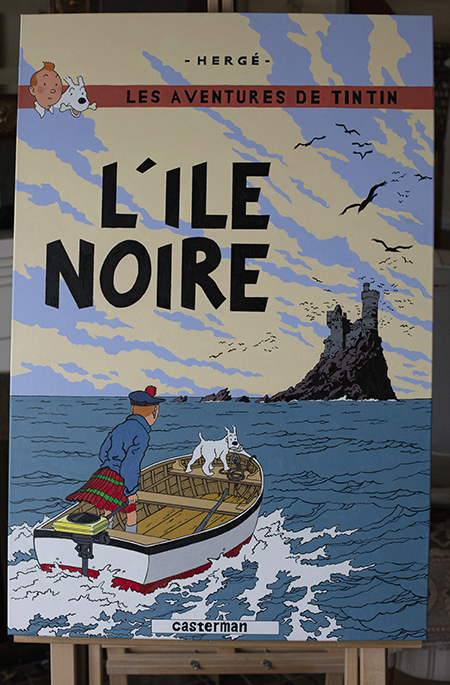
Above is the completed painting. You will notice that the white tones of the boat differ on the back and side. There is white combined with black and a touch of yellow for the side of the boat, rather than the pure white required for the back. It took some experimenting with colors to finally realize the need for yellow.
The waves flattened by the boat are now just rounded bubbles behind the boat. However, on the sides, the appearance differs because the movement of the boat breaks the waves: Hergé therefore ensures a different treatment of the foam. He thought of everything, as usual!
It is now time to move on to another project. I am not sure yet, but I am thinking of “Blake and Mortimer” these heroes of Edgar P. Jacobs, a great master of the clear line style who initially worked with Hergé.
Glénat just published a book titled “Edgar P. Jacobs le rêveur d’apocalypses”, if you want to learn more on the subject…
Click on the link for more graphic novels and comics on my blog.
